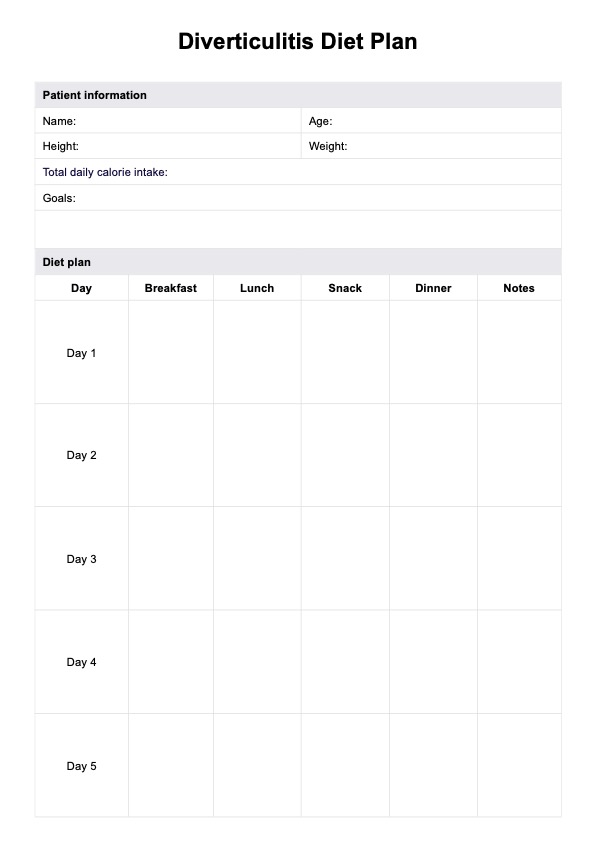The best test for diverticulitis is a CT scan, which provides detailed gastrointestinal and intestinal tract images and helps identify complications.

Diverticulitis Test
Explore our comprehensive Diverticulitis Test for accurate diagnosis. Quick, reliable results to guide your path to digestive health.
Use Template
Diverticulitis Test Template
Commonly asked questions
Diverticulitis can be detected by blood tests that reveal signs of inflammation or infection, such as elevated white blood cell counts and inflammatory markers.
Warning signs and other symptoms of diverticulitis include severe abdominal pain, changes in bowel habits, nausea, vomiting, and, in some cases, chills and sudden belly pain.
EHR and practice management software
Get started for free
*No credit card required
Free
$0/usd
Unlimited clients
Telehealth
1GB of storage
Client portal text
Automated billing and online payments











